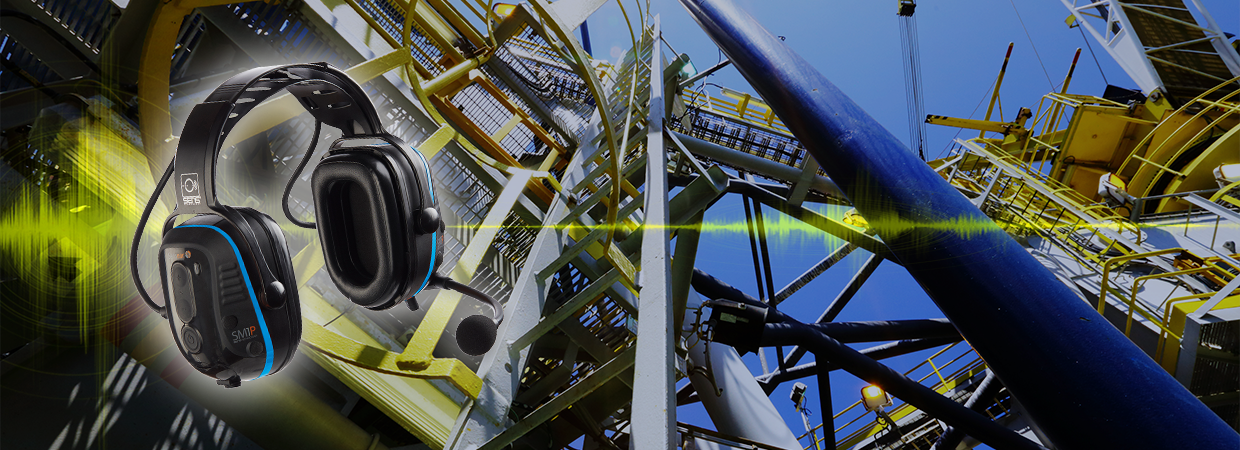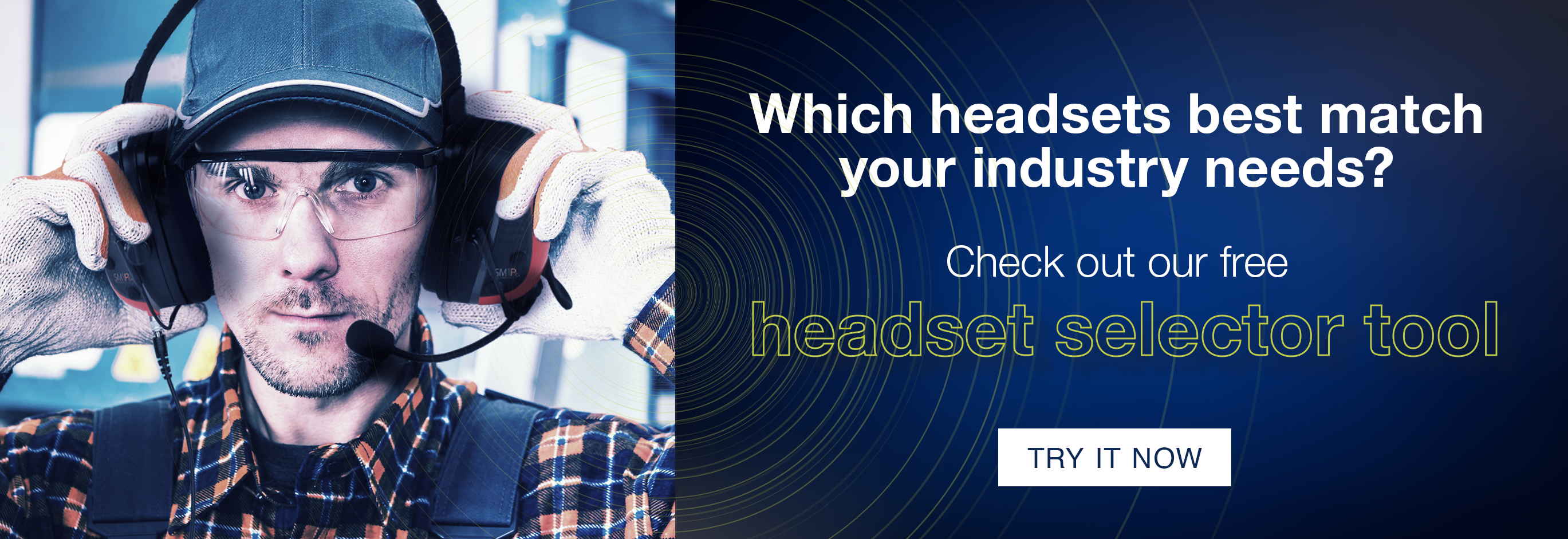- Home
- Blog
- High-Noise Communication
- Enhance Worker Safety with Advanced Oil & Gas Communication Solutions

Enhance Worker Safety with Advanced Oil & Gas Communication Solutions
Enhance Worker Safety: Advanced Communications for Oil & Gas
Whether you're on an offshore rig or managing a refinery, noise is a constant threat, not just to worker health but also to clear communication and operational efficiency. According to the National Institute for Occupational Safety and Health (NIOSH), 23% of mining and oil and gas extraction workers experience hearing difficulties. Additionally, 28% of these noise-exposed workers report not wearing hearing protection. These statistics highlight the dual challenge faced by the industry: mitigating the risk of hearing loss while maintaining effective communication. This guide explores the best communication solutions designed specifically for the unique challenges of the oil and gas industry, equipping you with the knowledge to safeguard your team and enhance productivity.
Prioritizing Hearing Protection and Situational Awareness
Ensuring workers' hearing protection without compromising their awareness of their surroundings is crucial. In high-noise environments, quality hearing protection is vital. However, total noise cancellation can be counterproductive. Technologies like noise suppression and volume limiting are preferable. These solutions reduce harmful noise while allowing workers to hear critical sounds, maintaining situational awareness.
Situational awareness is crucial in high-risk environments, where workers need to be aware of their surroundings to avoid hazards, coordinate tasks, and ensure overall safety. For instance, in an oil refinery, workers need to hear the direction and distance of sounds from machinery and alarms while protecting their hearing from constant loud noises.
Now that we've discussed the importance of 360° situational awareness in hearing protection, let's explore how to ensure that your hearing protection solution is safe to use in explosive environments.
Ensuring Intrinsic Safety
In the oil and gas industry, where potentially explosive environments are common, the intrinsic safety of communication devices is essential. Intrinsic safety ensures the safe operation of electrical equipment in hazardous areas by limiting electrical and thermal energy to prevent ignition.
Even a small spark can cause catastrophic incidents in environments with flammable gases, vapors, or dust. Headsets that meet stringent international safety standards, such as ATEX and IECEx, can be safely used in these hazardous locations. For example, on an offshore oil rig, volatile substances require all electrical equipment to be intrinsically safe before entering sensitive areas.
Having discussed the need for intrinsically safe equipment, let's now consider the choice between wired and wireless communication options.
Choosing Between Wired and Wireless Options
Selecting the right type of communication device, whether wired or wireless, depends on specific operational needs. Wireless Bluetooth® headsets offer mobility and convenience, making them ideal for use with digital radios and smartphones. For those using analog devices, a wired option may be more suitable.
In dynamic drilling operations, wireless headsets allow workers to move freely, enhancing mobility and efficiency. Conversely, wired headsets are preferred when continuous connectivity and power are critical, such as in control rooms.
Dual-function headsets that offer both wired and wireless options can be particularly beneficial. These headsets switch between modes depending on the situation, providing versatility and reliability. This adaptability ensures uninterrupted communication, regardless of the environment or technological infrastructure.
After understanding the benefits and applications of wired and wireless options, it's essential to focus on enhancing direct communication between team members.
Facilitating Headset-to-Headset Communication
Direct communication between headsets is crucial for teams working closely together, especially in high-noise environments or where quick decisions are necessary. This system allows workers to communicate directly without relying on two-way radios or broadband devices. It streamlines communication, reduces dependency on external devices, and minimizes potential points of failure.
In fast-paced, high-noise settings like drilling operations or refinery maintenance, headset-to-headset communication instantly conveys instructions and alerts. Whether through face-to-face conversations or using FM frequency short-range options, these communication methods enhance team coordination and efficiency. Workers can quickly relay safety warnings or status updates, creating an immediate feedback loop that helps maintain operational flow and improves response times to any incidents or changes in the work environment.
Facilitating effective communication is critical, but ensuring long-term comfort for workers using these devices is equally important.
Ensuring Comfort for Long-Term Use
Comfort in hearing protection is often overlooked but crucial. If headsets are uncomfortable, workers are less likely to wear them consistently, reducing their effectiveness. Ensuring headsets provide all-day comfort is essential for maintaining protection and communication throughout the workday.
Comfortable headsets encourage consistent use, which is vital for safety and productivity. Features like adjustable headbands, cushioned ear pads, and lightweight materials make a significant difference. Depending on the work environment, different headset styles, such as headbands, behind-the-neck designs (ideal for those wearing helmets), or helmet-mounted ear muffs, can enhance comfort.
In-ear buds are also highly effective, especially in extreme heat conditions or when workers are in hazmat suits. Ergonomic designs that fit well without causing pressure points or discomfort are critical to long-term wearability.
In environments where workers wear headsets for extended periods, such as 12-hour shifts on an oil rig, comfort is even more critical. Breathable headsets that reduce heat buildup can prevent discomfort and fatigue, keeping workers focused and protected.
With comfort addressed, let's explore how Sensear's comprehensive solutions meet these needs.
Sensear's Advanced Solutions
Sensear partners with leading oil and gas companies worldwide, providing tailored solutions that meet the industry's diverse and demanding needs. Our products are used globally, from offshore rigs in the North Sea to refineries in the Middle East. By understanding the unique challenges faced by different regions and operations, Sensear can offer solutions that are not only effective but also compliant with local regulations and standards. This adaptability ensures that our products seamlessly integrate into various operational environments worldwide.
Innovative SENS® Technology
Our patented SENS® Technology sets us apart by enhancing speech while suppressing background noise, allowing for clear communication in high-noise environments. Additionally, SENS® Technology provides 360° situational awareness, enabling workers to detect the direction and distance of sounds, which is crucial for safety.
This technology is particularly beneficial in dynamic and noisy environments where situational awareness can prevent accidents and improve safety. For example, workers can hear approaching machinery or warning signals while still engaging in clear conversations, ensuring they remain aware of their surroundings.
Unique Dual Protection Headsets
Sensear offers dual-protection headsets that are unique to the market. These headsets provide in-ear and over-the-ear solutions, ensuring maximum hearing protection and comfort. This dual approach is ideal for demanding environments, offering flexibility and enhanced safety.
Dual protection headsets cater to various noise levels and personal preferences, providing a versatile solution that can adapt to different tasks and conditions. For instance, in-ear protection might be preferred in extremely noisy areas, while over-the-ear protection could be more suitable for moderately loud environments.
Commitment to Quality and Compliance
Quality is at the core of Sensear's products. Our headsets comply with global safety standards, including ISO 9001:2015, ensuring reliability and customer satisfaction. We offer a one-year guarantee on all our products and provide extensive support resources, including manuals and training documents, to help customers maximize the use of their equipment.
Compliance with international standards demonstrates our dedication to maintaining high-quality products that can be trusted in hazardous environments. This commitment to quality ensures that our customers can rely on our headsets for consistent performance and safety.
Enhancing Workplace Safety and Communication
Ready to enhance your operational safety and communication efficiency? Contact one of our high-noise specialists today to learn more about how Sensear's intrinsically safe communication headsets can benefit your operations. Experience the difference advanced technology and dedicated support can make in your high-noise environments.









